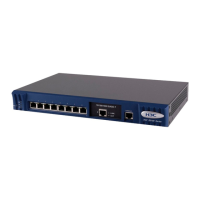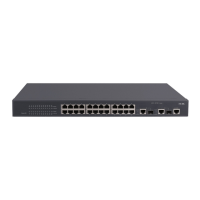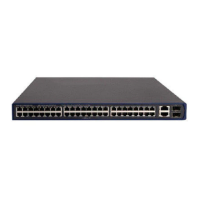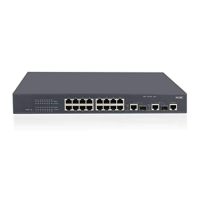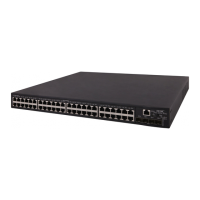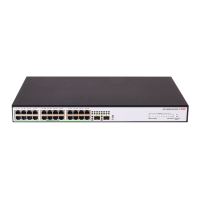1-3
z The auto-negotiation mechanism at the physical layer detects physical signals and faults. DLDP
identifies peer devices and unidirectional links, and disables unreachable ports.
z Even if both ends of links can work normally at the physical layer, DLDP can detect whether these
links are connected correctly and whether packets can be exchanged normally at both ends.
However, the auto-negotiation mechanism cannot implement this detection.
DLDP Fundamentals
DLDP packets
DLDP detects link status by exchanging the following types of packets.
Table 1-1 DLDP packet types
DLDP packet type Function
Advertisement
Notifies the neighbor devices of the existence of the local device. An
advertisement packet carries only the local port information, and it does
not require response from the peer end.
RSY-Advertisement
packets (referred to as
RSY packets hereafter)
Advertisement packet with the RSY flag set to 1. RSY advertisement
packets are sent to request synchronizing the neighbor information when
neighbor information is not locally available or a neighbor information
entry ages out.
Flush-Advertisement
packets (referred to as
flush packets hereafter)
Advertisement packet with the flush flag set to 1. A flush packet carries
only the local port information (instead of the neighbor information) and is
used to trigger neighbors to remove the information about the local
device.
Probe
Probe packets are used to probe the existence of a neighbor. Echo
packets are required from the corresponding neighbor. Probe packets
carry the local port information. Neighbor information is optional for probe
packets. A probe packet carrying neighbor information probes the
specified neighbors; A probe packet carrying no neighbor information
probes all the neighbors.
Echo
Response to probe packets. An echo packet carries the information about
the response port and the neighbor information it maintains. Upon
receiving an echo packet, a port checks whether the neighbor information
carried in the echo packet is consistent with that of itself. If yes, the link
between the local port and the neighbor is regarded as bidirectional.
Disable
Disable packets are used to notify the peer end that the local end is in the
disable state. Disable packets carry only the local port information instead
of the neighbor information. When a port detects a unidirectional link and
enters the disable state, the port sends disable packets to the neighbor. A
port enters the disable state upon receiving a disable packet.
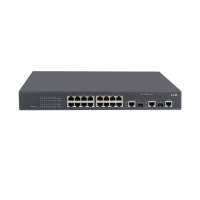
